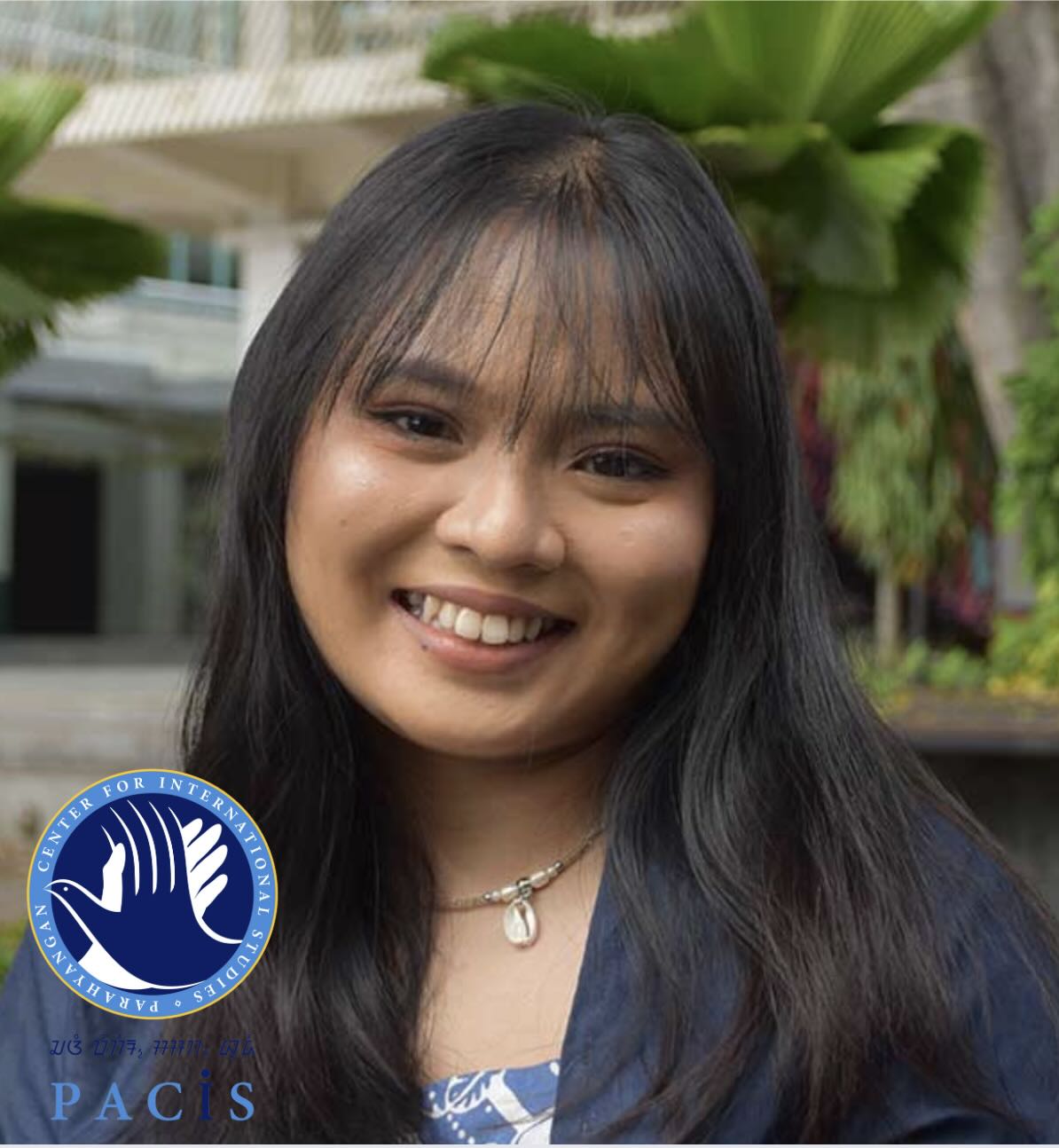By: Maria Alpha Carmelite, Lecturer in IR, Researcher – PACIS
In recent years, Indonesia’s local perfume industry has experienced remarkable growth. Our local brands such as House of Medici with their sisterbrand, HoM Haute, Project 1945, Ataraksia, Semerbak Perfume, and Rumah Atsiri have emerged with distinct identities and creative signatures. Perfume was once perceived as a symbol of European luxury or Middle Eastern opulence, but today, the public has begun to take pride in local creations that capture the scent of Indonesia in a modern and confident way. This shift reflects not only a change in consumer preference but also a deeper transformation in how society understands cultural products in the age of globalization.
“This shift reflects not only a change in consumer preference but also a deeper transformation in how society understands cultural products in the age of globalization.”
Perfume is a silent language that tells stories through scent, carrying memory, emotion, and identity in ways that words often cannot. It connects people to their surroundings and histories, blending culture and personal experience into something intimate yet universal, where in the Indonesian context, fragrance becomes a new medium for expressing local pride and belonging. The growing prominence of Indonesian perfume brands can be understood through the concept of glocalization, introduced by Roland Robertson (1995), which describes how global elements are reinterpreted within local contexts. Glocalization does not oppose globalization; instead, it invites a dialogue where global ideas are reshaped by local meanings, symbols, and values.
Robertson argues that glocalization reflects the simultaneity of the global and the local, where neither fully dominates the other. It is a process of mutual adaptation in which local actors selectively incorporate global influences while preserving their distinct cultural frameworks. Through this lens, globalization is not a one-way flow from the West to the rest, but a dynamic exchange that allows local creativity to redefine global norms. In practice, glocalization turns cultural interaction into a space of negotiation, innovation, and identity formation.
Glocalization of Perfume
In Indonesia’s perfume landscape, glocalization appears through the creative ways perfumers merge global aesthetics with local narratives. They adopt minimalist packaging, personal storytelling, and premium ingredients while grounding their creations in the cultural richness of the archipelago. Perfume, therefore, becomes more than an object of luxury. It is transformed into a sensory and cultural experience where fragrance operates as a signifier that connects tradition and modernity. Project 1945, for example, places Indonesian identity at the heart of its creations. Scents such as Princess of Java and Waters of Maluku evoke regional character through jasmine, clove, and spice, recalling Indonesia’s natural abundance and historical trade legacy. Ataraksia draws inspiration from local myths and epics, as reflected in its Babad Purnabhawa and Horor Mitologi series, turning perfume into an olfactory archive of cultural memory. House of Medici dan HoM Haute capture the harmony between cosmopolitan sophistication and tropical warmth through ingredients like Sulawesi patchouli, ylang-ylang, and Javanese tobacco. Meanwhile, Semerbak Perfume is known for its distinctively Indonesian naming style, featuring titles such as Candra Kirana, Nyiur Bersemi, and Asmoro Bangun. The brand also frequently uses incense notes, a fragrant treasure that highlights the richness of Indonesia’s essential oil industry. Rumah Atsiri combines perfumery with ecology and agricultural heritage, emphasizing a farm-to-bottle philosophy that relies on locally cultivated plants such as citronella, patchouli, and cananga.
These examples show that Indonesian perfumers do not simply imitate global trends. They reinterpret and localize them, creating hybrid forms that are both globally relevant and culturally grounded. This is the spirit of glocalization as a dynamic exchange between global and local sensibilities. Tropical notes, native florals, and traditional spices are refined through modern design and storytelling, producing fragrances that speak to international audiences while remaining true to local authenticity.
Perfume also acts as a subtle yet profound mode of cultural representation. Through scent, local values and spiritual nuances travel beyond borders. Many Indonesian perfumes capture a sense of place: Bali through incense and frangipani, Maluku through marine and ozonic notes, Java through the calm sweetness of jasmine and tobacco. Each fragrance tells a story about geography, emotion, and identity. Perfume, then, becomes more than a lifestyle object; it transforms into an intimate narrative about how Indonesians understand space and belonging.
“Perfume also acts as a subtle yet profound mode of cultural representation. Through scent, local values and spiritual nuances travel beyond borders.”
Within the framework of glocalization, this movement reflects how Indonesian society negotiates identity within global currents. Local perfume brands do not merely adapt to international expectations but embed cultural meaning within contemporary forms. Globalization, in this sense, does not erase differences. Instead, it becomes a creative field where new articulations of Indonesian-ness take shape.
Political-Economic Dimension
The rise of local perfume makers also signals a shift in Indonesia’s cultural economy. They are not only producers of goods but also cultural agents shaping how Indonesia is perceived through aesthetics, storytelling, and design. Glocalization allows these creators to present a soft expression of national culture—one that arises organically from society’s awareness of its own heritage and creative potential, rather than from formal diplomacy. This phenomenon also reveals a political-economic dimension. By merging global standards with local materials, Indonesia’s perfume industry demonstrates that the Global South is not merely a receiver of global trends. It is also a source of creativity and cultural value. Through these creations, the industry asserts its place in the global dialogue of taste and aesthetics.
Beyond its economic significance, glocalization in Indonesia’s perfume sector enriches our understanding of how culture evolves in contemporary life. There is a constant tension between appealing to global sensibilities and preserving local roots. Yet this very tension nurtures innovation, giving Indonesian perfumes their distinct character in the global arena.
Ultimately, the emergence of local perfumery is more than a business success story. It represents a cultural articulation of identity, a form of self-expression that bridges the global and the local through the invisible language of scent. Every fragrance tells a story of adaptation, creativity, and pride. To smell these perfumes is to encounter Indonesia itself: open to the world, yet deeply anchored in its own roots.
“To smell these perfumes is to encounter Indonesia itself: open to the world, yet deeply anchored in its own roots.”
References
Academic Books & Journals
Appadurai, A. (1996). Modernity at Large: Cultural Dimensions of Globalization. University of Minnesota Press.
Featherstone, M. (1995). Undoing Culture: Globalization, Postmodernism and Identity. SAGE Publications.
Iwabuchi, K. (2002). Recentering Globalization: Popular Culture and Japanese Transnationalism. Duke University Press.
Kraidy, M. M. (2005). Hybridity, or the Cultural Logic of Globalization. Temple University Press.
Nilan, P., & Feixa, C. (Eds.). (2006). Global Youth? Hybrid Identities, Plural Worlds. Routledge.
Robertson, R. (1995). Glocalization: Time-space and homogeneity-heterogeneity. In M. Featherstone, S. Lash, & R. Robertson (Eds.), Global Modernities (pp. 25–44). SAGE Publications.
Steger, M. B. (2017). Globalization: A Very Short Introduction (4th ed.). Oxford University Press.
Stronza, A., & Durham, W. H. (Eds.). (2008). Ecotourism and Conservation in the Americas. CABI Publishing.
Suryawan, I. N. (2021). Local fragrance, global scent: Cultural adaptation and the rise of Indonesian niche perfumery. Journal of Cultural Industries and Creative Economy, 3(2), 45–60.
Tomlinson, J. (1999). Globalization and Culture. University of Chicago Press.
Online Articles & News Reports
Illuminate Asia. (2023, May 12). The Rise of Indonesian Local Perfumes. Illuminate Asia. https://www.illuminateasia.com/blog/articles/detail/the-rise-of-indonesian-local-perfumes
Kompas.id. (n.d.). En Semerbak: Bisnis Wewangian. Kompas. https://www.kompas.id/artikel/en-semerbak-bisnis-wewangian
Yulita, R. (2024, August 20). The verdant growth of the local perfume industry. TFR News. https://tfr.news/articles/2024/8/20/indonesian-perfume-industry
Official Websites & Social Media
Ataraksia (Instagram). (n.d.). Ataraksia Official Instagram Account. Instagram. https://www.instagram.com/ataraksia.id/?hl=en
Medici House of (Instagram). (n.d.). Medici House of Official Instagram Account. Instagram. https://www.instagram.com/medicihouseof/?hl=en
Project 1945 (Instagram). (n.d.). Project 1945 Official Instagram Account. Instagram. https://www.instagram.com/project1945.id/?hl=en
Rumah Atsiri. (n.d.). Rumah Atsiri Official Website. https://www.rumahatsiri.com/
Rumah Atsiri (Instagram). (n.d.). Rumah Atsiri Official Instagram Account. Instagram. https://www.instagram.com/rumahatsiri/?hl=en
Semerbak_co (Instagram). (n.d.). Semerbak_co Official Instagram Account. Instagram. https://www.instagram.com/semerbak_co/?hl=en






